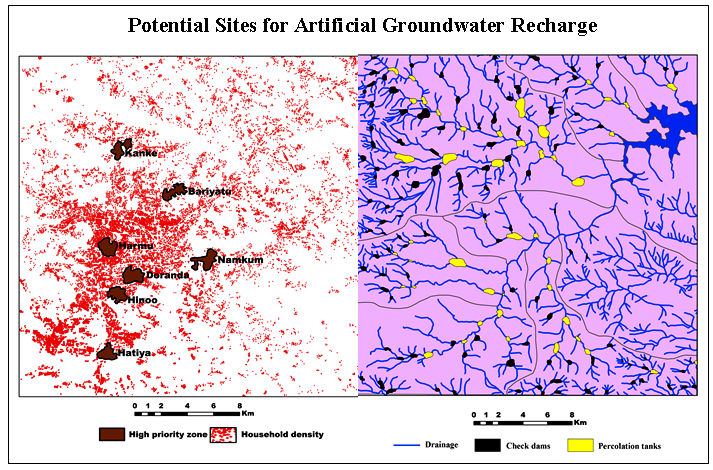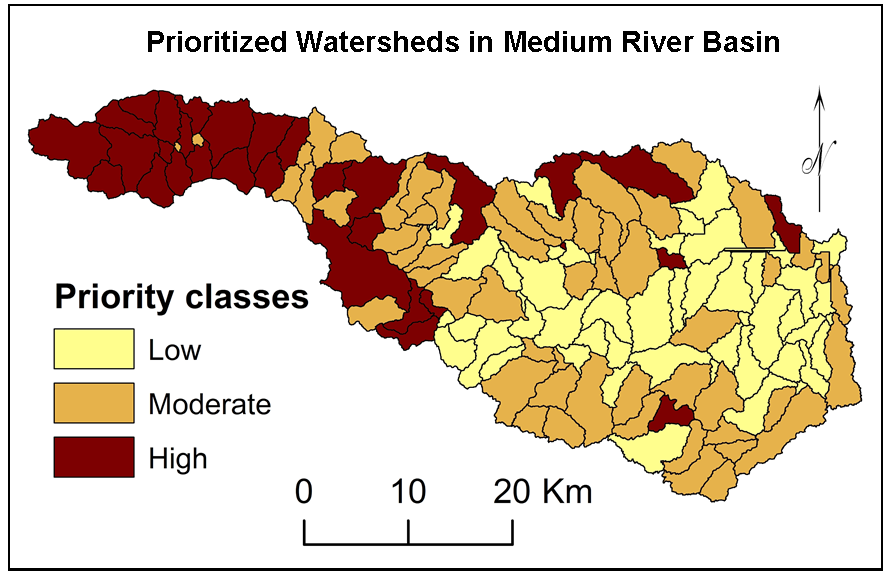Article Title :
Magnitude and Frequency Analyses of Floods on the Kaveri River of the Southern India by Using Gumbel Extreme Value Type-I Probability Distribution 
9 (2025)
1-9
Gumbel Extreme Value Type-I , return period , Flood Frequency , Kaveri River


The Gumbel Extreme Value Type-I (GEVI) probability distribution is applied to investigate magnitude and frequency of floods on the Kaveri River using Annual Maximum Series data for 17 to 47 years. The GEVI is used for future probabilities of occurrences of floods and to estimate the recurrence interval of average annual peak discharges (\(\bar{Q}\)), large floods (Qlf) and actually observed maximum annual peak discharges (Qmax). The discharges have been estimated for 2-yr, 5-yr, 10-yr, 25-yr, 50-yr, 100-yr, 500-yr and 1000-yr floods that range from 9 to 10408 m3s-1. As per GEVI, the has a recurrence interval of 2.33 years, Qlf has 6.93 years. However, recurrence interval of Qmax range between 36 and 636 years. The curves portrayed on GEVI probability paper provide dependable estimates of floods. The GEVI probability distribution, therefore, can be reliably and conveniently used to estimate the recurrence intervals for given magnitude and vice versa.

The Gumbel Extreme Value type-I (GEVI) Probability Distribution is most suitable for flood frequency analysis of the Kaveri Basin.
The magnitude frequency analysis shows that the fitted lines are fairly close to most of the data points.
The return period of the Qm, Qlf and Qmax seems to be very reliable.
The estimation of the discharges for the 100-yr flood is close to the observed Qmax discharge.
The GEVI probability distribution, therefore, can be consistently and conveniently used to estimate the recurrence intervals for given magnitude and vice-versa.
Castillo, E., Hadi, A. S., Balakrishnan, N., and Sarabia, J. M., 2005. Extreme value and related models with applications in engineering and science. International Statistical Institute, 368.
Central Water Commission (CWC), 2020. Water year book 2018-19. Cauvery and Southern Rivers Circle. Bengaluru.
Gumbel, E. J., 1958. Statistics of Extremes. The Incorporated Statistician, 10(2), 96.
Haan, C.T., 1977. Statistical methods in hydrology. Iowa State University Press, Ames (USA), 378.
Hazen, A.,1930. Flood Flows: A Study of Frequencies and Magnitudes. Wiley, New York.
Shaw, E., 1988. Hydrology in practice. Wokingham, Berkshire, England: Van Nostrand Reinhold (UK).
U. S. Water Resources Council, 1981. Guidelines for Determining Flood Flow Frequency, Bull. No. 17B. U.S. Water Resource Council, Washington, D.C.






